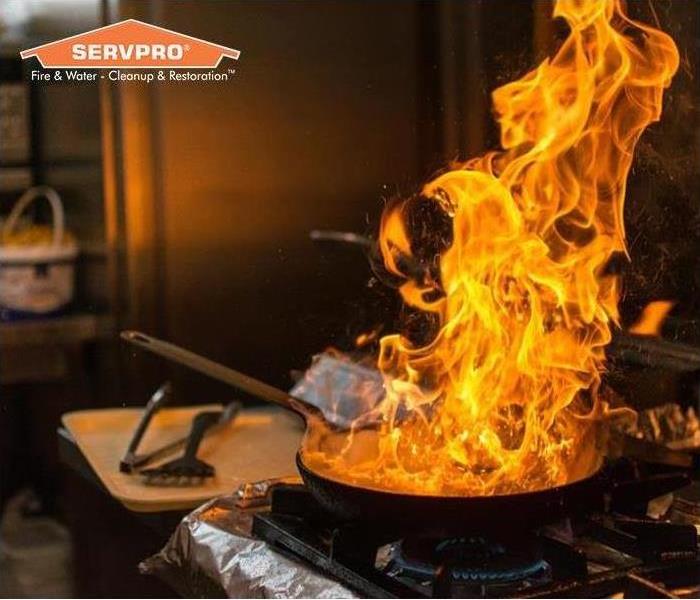What are the Most Common reasons a home needs fire damage cleanup?
9/10/2020 (Permalink)
SERVPRO brings professional equipment to the Memphis homes for the best outcome from any type of fire loss.
The most common cause of house fires happens in the kitchen, with the most common scenario being someone cooking with oil gets distracted, and the pan overheats and catches on fire. This problem can get elevated if water gets thrown on the hot grease. The hot oil causes water to turn immediately into steam, and as it expands, it quickly feeds and spreads the flames. Other frequently seen causes in home fires include:
* Furnace malfunctions
* Smoking in bedrooms
* Faulty electrical systems
* Unattended candles
* Children playing with matches or lighters
What is the Best Cleaner used for Fire Damage?
Unfortunately, when it comes to fire damage cleanup in Memphis properties, there is not a one-cleaner-fits all solution. The residues left behind by a fire can get placed in two main categories: dry or wet. While dry is one of the easier types of smoke damage types to get off surfaces, it cannot get mixed with liquid cleaning agents or it can get driven deeper into surfaces. Wet smoke smears easily and can be difficult to remove without the use of cleaning solutions with solvents in them.
SERVPRO technicians test every surface before cleaning to ensure the right method gets chosen for both the type of corrective action needed and the surface getting wiped.
How restorable are the walls and ceilings post fire?
Seeing the walls and ceilings in your home after a fire can be disheartening. The black smoke damage can appear to coat surfaces and may look difficult to remove. SERVPRO technicians have two choices when it comes to these surfaces. First, whenever possible, they use their professional cleaning agents to lift away the smoke residues and leave the surface clean. However, in some solutions, the soot gets driven into the surface due to the hot air expanding during the fire. When that scenario occurs, the use of a sealant to seal off the odorous soot preps the walls and ceilings for priming and painting.
Soot-Covered Furnishings May Have Restoration Potential
Many factors determine whether or not hardwood furnishings can get cleaned for reuse. First and foremost, if they are actually wood. Pressed wood and other composites generally react badly to the extreme temperatures of a fire and even worse when they come into contact with the water used to extinguish it. Other considerations are:
- If there is charring or unrepairable damage to the furniture
- The length of time exposed to water
- How quickly the restoration efforts began
SERVPRO has specially formulated cleaners for all types of wood and can remove even greasy wet smoke residues from hardwood furnishings. In some cases, the item may require refinishing afterward, but the surface will be clean and prepped for it.
Can Carpet Get Restored After a Fire Loss?
Much like furnishings, the carpet may have cleaning potential. SERVPRO technicians inspect it to see evidence of fiber melting, water damage, and other problems. If the carpet has the potential for restoration and reuse, the techs can use their deep cleaning methods, such as their steam cleaning units that pull away dirt and soot without leaving cleaning residues behind.
Window Treatments and Other Fabric Items
When clothing or window treatments get affected by smoke damage, and they do not require dry cleaning, the techs have access to robust Esporta washing systems that can return the items to the food-grade level of cleanliness after just one wash. Things that have the potential to shrink or bleed when they come into contact with water will need alternative methods of cleaning.
Odor Control Methods are a Must After Fire Loss
Before any type of repairs or rebuilding can happen within the loss areas, odor control applications need to happen. The technicians may use multiple methods to ensure that any remaining fire odors within the home get eradicated. They have light modes such as time-release gel pellets for on-going odor control or stouter practices such as thermal fogging or hydroxyl generators that actually change the soot particles at the molecular level and eliminate their ability to produce odors. Thermal fogging is particularly useful when applied to objects with deeply embedded odors as the heated fog penetrates porous objects in the same manner as the hot air did during the fire. This enables the solvent to reach and neutralize odors within things.






 24/7 Emergency Service
24/7 Emergency Service
